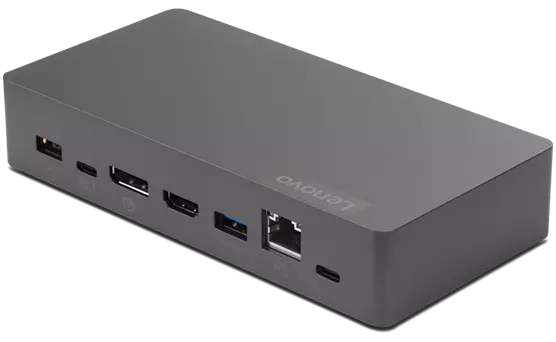In the field of virtualization, the selection of server hardware can have a huge impact on the performance, expandability, and potency of virtualized environments. This is because virtualization requires technical accuracy. Blade servers emerged as the appropriate foundation for virtualization because of their highly technological mechanisms. Here are five factors that make blade systems ideal for virtualization:
High-density blade chassis
Blade server stands out as a prominent solution for businesses due to their high-density design. In the virtualization world, space is a valuable resource, which is why firms select these servers to make the most of their space. These servers can accommodate several blades in a small footprint since they can fit into a single enclosure. A single chassis serves as the source of power, cooling, and network connectivity for all the blades.
- Space Efficiency: The high-density blade architecture is constructed to hold several server blades in one enclosure. It often ranges from 6 to 14 or more. Each blade system looks like a unit, like a module that can be slid into the chassis. This optimizes use in a data center, where space is frequently an important asset.
- Streamlined Management: Blade-based computers share all the common resources, including the power supply, cooling fans, and networking infrastructure, in the chassis. This centralized infrastructure makes administration easier and clears up the mess of cables.
- Cost Efficiency: By merging several blades onto a single frame, you can obtain significant cost reductions. These server systems require fewer chassis units. It lowers the price of hardware acquisition, the amount of energy used, and the amount of cooling needed.
- Redundancy and Reliability: Blade frames often include redundant parts like cooling fans and electrical components to increase system dependability. In virtualization systems in which availability is key, redundancy is essential.
Virtualization-Centric Processors
Virtualization-centric processors are a core component in blade computing systems. These CPUs are available with hardware-level virtualization enhancements like Intel VT-x or AMD-V. These highly technical options can accelerate virtual machine operations.
- Enhanced VM Isolation: Security and segregation among virtual machines are essential in virtualization systems. Technologies like Intel VT-d (Virtualization Technology for Directed I/O) and AMD IOMMU (Input-Output Memory Management Unit) offer hardware-level separation across VMs. Administrators can enable these measures on virtualization-focused computers.
- Efficient Resource Allocation: Several virtual machines with distinct resource requirements are frequently hosted on blade-type servers. Virtualization-focused processors offer features like CPU resource allocation and priority setting. Administrators can assign CPU resources, cache, and memory to each virtual machine (VM) using features like Intel’s Resource Director Technology (RDT) and AMD’s Secure Encrypted Virtualization (SEV).
- Live Migration Support: Real-time migration allows the uninterrupted transfer of virtual machines from one physical server to another. Virtualization-centric computers enable effective live conversion by enhancing network and I/O performance throughout the migration process with innovations like Intel VT-c (Virtualization Technology for Connectivity).
Precise Networking Capabilities
Blade servers provide a precise technological solution for networking in virtualization. The majority of blade chassis comes equipped with high-speed networking switches that are integrated and have advanced capabilities. It includes support for virtual LANs (VLANs) as well as quality of service (QoS). Operators can create complicated, separated networking setups for computer instances using these features. It helps in guaranteeing optimal security and efficacy.
- High-Speed Networking: Several fast network ports are frequently included with blade computing systems, such as 10 Gigabit Ethernet (10GbE) or even more rapid connections. Broadband connections are required to handle the additional network traffic brought on by several virtual machines (VMs) operating on a single physical computer.
- Network Redundancy: Blade systems typically offer redundant internet links to enhance network stability. These extra connections can be necessary in virtualization environments to ensure ongoing access to networks. These systems are highly beneficial for live migration or failure scenarios.
- Traffic Monitoring and Analysis: Blade systems usually come with capabilities for network traffic analysis and management. These approaches enable administrators to immediately recognize and tackle networking-related issues while giving them insight into the performance of the network.
Advanced Management and Orchestration Tools
Blade-type server systems incorporate sophisticated administration and orchestration capabilities that provide smooth management of virtualized commodities. Managers can generate, deploy, and handle virtual machines successfully by utilizing these tools. It includes technological features like computerized provisioning, remote server administration, and performance monitoring to simplify daily operations.
- Centralized Management: Advanced administration features give administrators a centralized interface for monitoring and managing these servers inside the enclosure. This centralized management simplifies the process of total administration of the numerous virtual machines (VMs) running on these blades. From a single location, administrators can effectively configure, watch over, and troubleshoot VMs.
- Resource Allocation: These technologies give managers proper control over the distribution of assets to VMs. It also enables them to assign CPU, RAM, storage spaces, and internet connections following the demands of the workload.
Read Also: How Rack Servers Provide Eco-Friendly Solutions for Your Business?
Conclusion
Blade systems are a masterpiece of engineering that is perfectly suited for the needs of virtualization. They are the first choice for companies looking to fully utilize virtualization capabilities. These types of servers come with amazing high-density designs, modular scalability, integrated administration tools, networking and storage flexibility, low power consumption, and redundancy.










